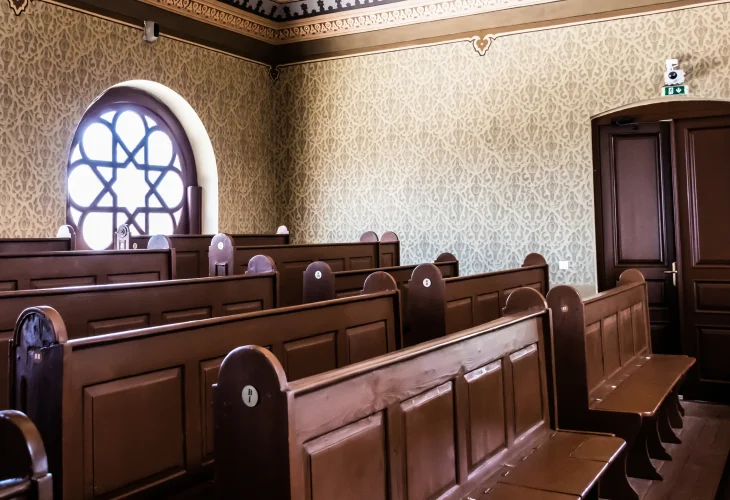Discovering the Legacy of Rashi's Synagogue
In Worms, Germany, lies a synagogue that's stood for a near millennium, housing a plaque nearly 1,000 years old. This is where Rashi, the revered scholar, studied as a young man under Rabbi Yaakov ben Yakar.
 (Photo: Shutterstock)
(Photo: Shutterstock)Walking into synagogues, we often notice plaques commemorating generous donors who helped establish these sacred spaces. While some of these plaques are centuries old, few of us have encountered one approaching a thousand years in age.
In Worms, Germany, you can see such a plaque at a synagogue that's been almost continuously active for a millennium. It's a place of deep historical significance, where the esteemed Rashi once studied under Rabbi Yaakov ben Yakar as a young student.
The synagogue was originally established in 1034. According to the plaque, its construction was funded by "Yaakov ben David and Mistress Rachel." It boasted around 230 seats and was adjacent to a study house where Rabbi Yaakov ben Yakar taught his students.
About sixty years later, during the Second Crusade in 1146, the synagogue suffered severe damage amid widespread persecution, which inspired Rashi's lament: "Pure Torah—ancient and revered—draped in black like a widow. Grieve for the plight of your faithful and the blood of your students."
In 1175, the synagogue was rebuilt, and a special mikveh was constructed nearby. This ritual bath, carved deep into a tunnel with waters connecting to the Rhine River, remains active today! A magnificent women's gallery was also added during this period.
In 1624, the synagogue was further expanded, with the addition of an ancient stone seat known as "Rashi's Chair," where tradition holds that Rashi taught his pupils.
Before the Holocaust, the Orthodox Jewish community in Worms had dwindled, and the city's "progressive" Jews merged the men's and women's sections. Devout Orthodox services were held in another synagogue across the street.
During World War II, the synagogue was bombed, leaving its structure in ruins for several years. In 1958, it was meticulously restored according to its ancient design. Over 15 years ago, antisemitic neo-Nazis attempted to set the synagogue ablaze with firebombs, but local firefighters extinguished the flames before major damage occurred.
Located on Judengasse (Jewish Street) in Worms, the synagogue sits near a small rounded niche in the alley, where Rashi’s mother supposedly hid while pregnant with him to avoid a marauding horseman. Along this historic street, you can spot the indentations left by mezuzahs used by our ancestors who lived there for centuries. Today, approximately 100 Jews reside in Worms, though they no longer inhabit the old Jewish street, gathering in the synagogue mainly for high holidays.
Nearby stands the ancient city gate called "Rashi's Gate," tied to a legend involving Rashi and Duke Godfrey of Bouillon. Rashi's prophecy purported that the duke would return through the gate alone, which came true when a stone mysteriously fell, killing his remaining soldiers. Since then, the gate has borne Rashi’s name.
Behind the old city is Europe's oldest and largest Jewish cemetery, resting place to many sages from the Tosafot period, including the renowned Rabbi Meir of Rothenburg, whose tomb is at the entrance along with that of Alexander the Benefactor, who financed his release. The cemetery boasts thousands of ancient Jewish graves and has yet to be fully explored. Its rescue from Nazi destruction involved elaborate deceptions and delays, contributing to its preservation thanks to historians and archaeologists committed to safeguarding this testament to Jewish heritage.

